A Journey Through Europe’s Uncharted Wonders
Are you tired of elbowing your way through crowds at the Eiffel Tower or jostling for a selfie spot in front of the Colosseum? I feel you.
It’s time to swap those over-trodden tourist trails for something a bit more… secretive. Enter the magical realm of “lesser-known tourist spots in Europe” – places so charming and tranquil, they’re Europe’s best-kept secrets (well, until now, anyway!).
Picture this: cobblestone streets untouched by the tourist hordes, quaint little cafés where the barista knows everyone by name (and maybe your coffee preference by the end of your trip), and views that aren’t obstructed by a sea of selfie sticks.
Sounds dreamy, right? These hidden spots in Europe offer just that – a chance to immerse yourself in authentic experiences, sans the crowds.
So, grab your metaphorical Indiana Jones hat (or a real one, no judgment here!), because we’re about to embark on an adventure to uncover Europe’s most underrated treasures.
Trust me, these places are so under-the-radar, even your most travel-savvy friends might not have them on their Instagram feeds yet. Buckle up, and let’s get exploring!
Berat, Albania
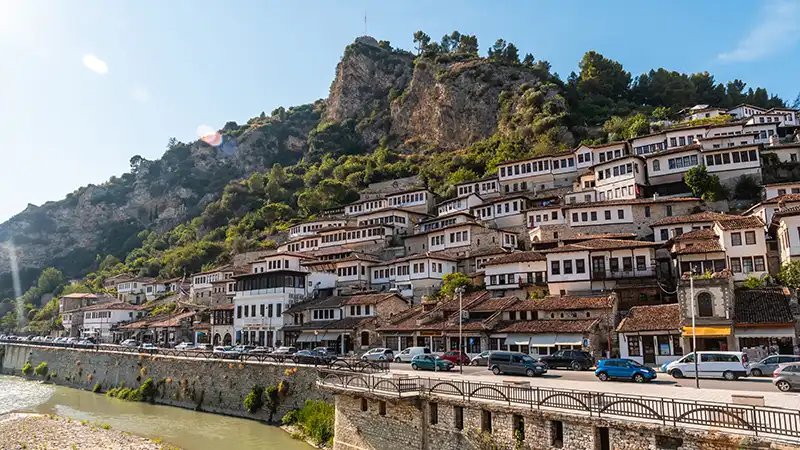
Alright, adventurers, buckle up as we zoom into one of Europe’s best-kept secrets, Berat, Albania – or as I like to call it, the “City of a Thousand Windows.” And trust me, it’s not just a fancy name.
This place is a real-life fairy tale town, straight out of a storybook, but without the dragons, thankfully!
Now, picture this: You’re wandering through streets lined with ancient Ottoman houses, each one boasting more windows than a high-tech Silicon Valley office.
It’s not just beautiful; it’s historically rich, too. Berat has been around for a whopping 2400 years! That’s older than your grandma’s secret cookie recipe.
As you stroll through the Mangalem district or gaze up at the castle, remember, you’re literally walking through a UNESCO World Heritage site. How cool is that?
But wait, it gets better. The castle in Berat isn’t just a relic to admire from afar. People actually live there! Imagine having a medieval fortress as your address.
Talk about bragging rights! And if you’re a fan of stunning views (who isn’t?), this castle has got you covered. It’s like Berat’s selfie spot, minus the selfie stick warfare.
Now, here’s the cherry on top: Berat is a symbol of religious harmony. Mosques and churches here are like old buddies, coexisting so peacefully it’ll restore your faith in humanity.
And let’s talk affordability. Your wallet will breathe a sigh of relief here, making Berat a must-visit among lesser-known tourist spots in Europe.
In a continent where tourist prices can soar higher than your flight there, Berat is a delightful exception.
So why should you visit Berat more often? Well, apart from it being a hidden gem in the treasure chest of lesser-known tourist spots in Europe, it’s a place where history, culture, and affordability meet.
It’s like finding an unspoiled paradise in a world of tourist traps. Berat isn’t just a destination; it’s a story waiting to be discovered. And who knows, you might just become a part of its next chapter!
Ohrid, North Macedonia
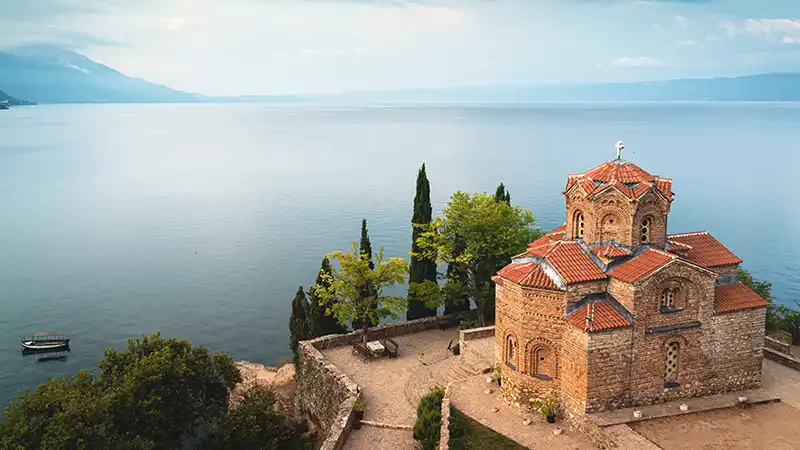
Okay, folks, next stop on our off-the-beaten-path European tour is Ohrid, North Macedonia. If you’ve ever dreamed of time-traveling, Ohrid is about as close as it gets.
This city isn’t just old; it’s ancient, with a history that’s been rolling for thousands of years. Walking through its streets is like flipping through the pages of a history book, but way more fun.
Now, if you’re into religious history or just really cool architecture, Ohrid is your jackpot. This place was once dubbed the “Jerusalem of the Balkans,” and for good reason.
It’s like a church treasure hunt, with the crown jewel being St. John at Kaneo. Perched on a cliff overlooking Lake Ohrid, this church isn’t just a feast for the soul; it’s a feast for the eyes.
And speaking of feasts, the lake itself is a natural wonder. One of Europe’s deepest and oldest, it’s got views that’ll make your Instagram followers green with envy.
But wait, there’s more! Ever wanted to feel like a king or queen surveying their kingdom? Head over to Samuil’s Fortress.
The panoramic views of the city and lake are so breathtaking, you might just forget to breathe (but please don’t).
So, why is this gem among the lesser-known tourist spots in Europe? Well, North Macedonia is like that quiet kid in class who’s actually a genius.
It’s not as flashy as some of its European siblings, so it tends to fly under the radar. And, while getting there might be a bit more of a quest than to other places, trust me, it’s worth it.
Why should you visit Ohrid? Picture this: an authentic travel experience where you’re not just another face in the tourist crowd.
It’s affordable (your wallet will thank you), culturally rich (your brain will thank you), and just plain beautiful (your soul will thank you). Ohrid isn’t just one of those lesser-known tourist spots in Europe; it’s a hidden treasure waiting to be explored.
Gásadalur Village, Faroe Islands, Denmark
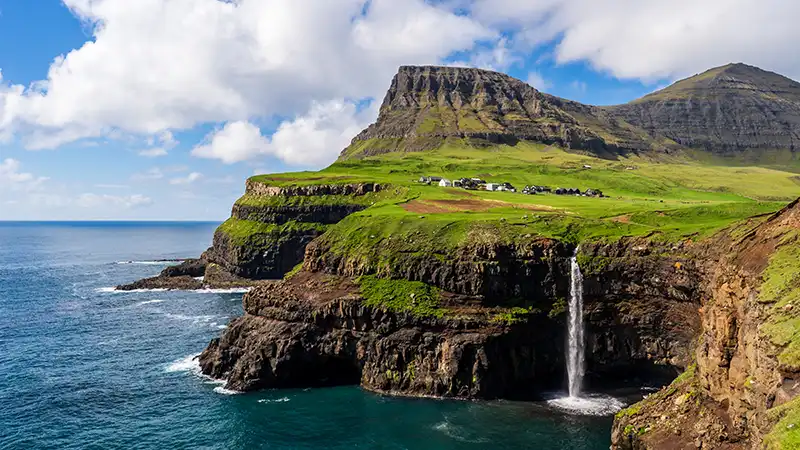
Welcome to Gásadalur Village, nestled in the Faroe Islands, Denmark. This little slice of heaven is the epitome of “out of sight, out of mind” – and trust me, it’s a sight to behold!
Imagine standing on the edge of Mykines, the westernmost island of the Faroes, with the vast North Atlantic stretching before you. It’s like being at the edge of the world, but with better scenery and fewer existential crises.
Gásadalur is not just any village; it’s home to the Múlafossur Waterfall – a natural wonder that looks like it’s straight out of a fantasy novel, cascading dramatically into the ocean.
It’s the kind of place that makes you want to write poetry, even if you’re more of a ‘text message’ kind of poet.
Now, let’s talk about those adorable grass-roofed houses – they’re not just eco-friendly; they’re straight out of a postcard from the past.
It’s traditional Faroese architecture at its finest, giving you a cozy, ‘homey’ feel in the midst of nature’s grandeur. And for you bird enthusiasts, the Faroe Islands are like a VIP bird-watching club.
Puffins, those cute, clown-faced birds, are the stars here, especially during breeding season. It’s like being in a live-action nature documentary, minus David Attenborough’s commentary.
Here’s the kicker: Gásadalur was once a hidden treasure, accessible only by foot over the mountains. But thanks to a tunnel built in 2004, getting there is easier, yet it remains one of those lesser-known tourist spots in Europe.
It’s like someone handed you the key to a secret garden. The best part? The peace and tranquility. It’s so quiet, you can hear your own thoughts – which, depending on your thoughts, could be a good or a bad thing.
So, why visit Gásadalur? Because it’s not just a place; it’s an experience. A rare gem among lesser-known tourist spots in Europe, offering breathtaking scenery, an escape from the hustle and bustle, and a chance to connect with nature in its purest form.
It’s where you go to recharge, to find inspiration, or maybe just to brag to your friends about this cool, remote place they’ve probably never heard of.
Røros, Norway
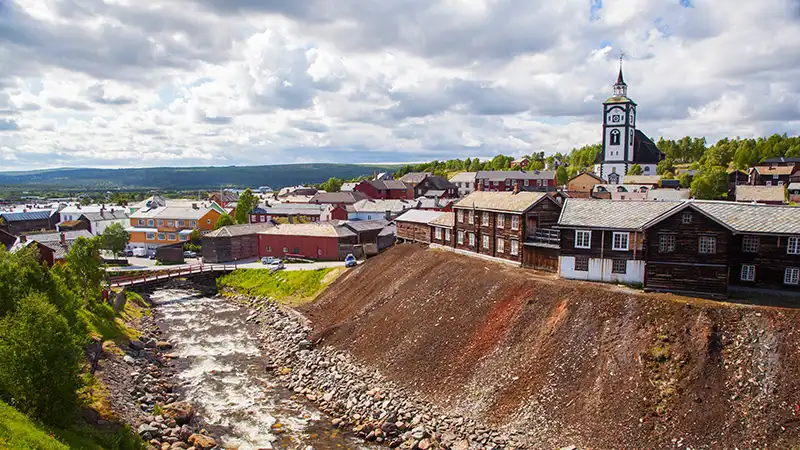
Alrighty, let’s jet-set to our next hidden treasure on the map of lesser-known tourist spots in Europe – Røros, Norway.
This isn’t just any small mining town; it’s like stepping into a time machine and popping out in a storybook setting, complete with wooden buildings and a history that’s as rich as their copper mines!
So, what’s the deal with Røros? Imagine a town so dedicated to keeping its history alive that even the buildings refuse to retire!
Founded in the 17th century around copper mining, this town is like the grandpa of mining towns – wise, respected, and full of stories. And the buildings – oh, the buildings!
Some of these wooden beauties have been standing since the 18th century, making you feel like you’ve walked onto a movie set where every corner whispers tales of the past.
But Røros isn’t just a pretty face with an old soul. It’s an adventurer’s playground, too! Winter here is like stepping into a snow globe – perfect for skiing.
And when the snow melts, swap those skis for hiking boots or a bike, and voilà – summer paradise! Plus, this town is a poster child for sustainable tourism.
It’s like they’ve made a pact with Mother Nature to keep things as green and eco-friendly as possible.
And before you ask, “But is there a giant, awe-inspiring church?” Yes, my friend, there is. Røros Church, one of Norway’s largest from the 18th century, stands tall and proud, beckoning you to bask in its glory.
Walking through Røros is like a dance through time – history, culture, and nature all waltzing together in perfect harmony.
It’s a must-visit, not just for the Instagram snaps, but for the soul-stirring experience that only true, lesser-known tourist spots in Europe like Røros can offer.
Procida, Italy
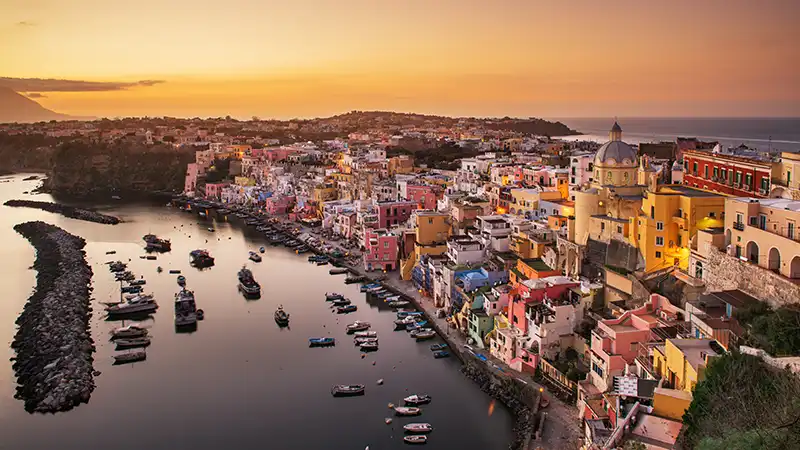
Oh, get ready to set your sights on Procida, Italy – an absolute jewel in the crown of lesser-known tourist spots in Europe.
Nestled off the coast of Naples, this little island is the shy cousin at the family reunion, often overshadowed by its flashy neighbors, Capri and Ischia.
But let me tell you, Procida packs a punch with its authentic Italian charm. It’s like finding a secret level in a video game that others have yet to discover!
First stop: Marina Corricella. Forget the polished, postcard-perfect tourist traps; this is where the real Italian flavor is at.
Picture pastel-colored houses snuggled together like a box of crayons that decided to settle seaside. This quaint fishing village is so laid-back, even the seagulls seem to take a leisurely pace.
It’s a slice of traditional Italian island life, unspoiled and vibrant.
Now, for the bookworms and movie buffs, Procida isn’t just a pretty face; it’s a muse. It’s inspired parts of Elsa Morante’s “Arturo’s Island” and has played backdrop to various films.
Walking through its streets, you might just feel like you’ve stepped onto a movie set – minus the celebrity tantrums.
But wait, there’s more! The Abbey of San Michele Arcangelo is a hidden treasure that’s a must-visit for history buffs. This little abbey is like a time machine, whisking you back to the 11th century.
And for the ultimate panoramic selfie, head to Terra Murata. This medieval village sits atop the island like a king on a throne, offering views that will make your Instagram followers green with envy.
Let’s talk food because, let’s be honest, that’s half the reason we travel, right? Procida is a seafood lover’s dream come true.
Fresh, delicious, and straight from the boat – it doesn’t get better than this. And for dessert, ‘Lingua di Procida’ is the unsung hero of Italian sweets.
Lemon-flavored and utterly scrumptious, it’s a taste of the island in every bite.
Procida is not just another dot on the map; it’s a vibrant tapestry of culture, history, and culinary delights.
It stands proud among the lesser-known tourist spots in Europe, a hidden gem waiting to be explored. So, why not be the trendsetter in your travel group and venture to this unspoiled paradise?
Cadaqués, Spain
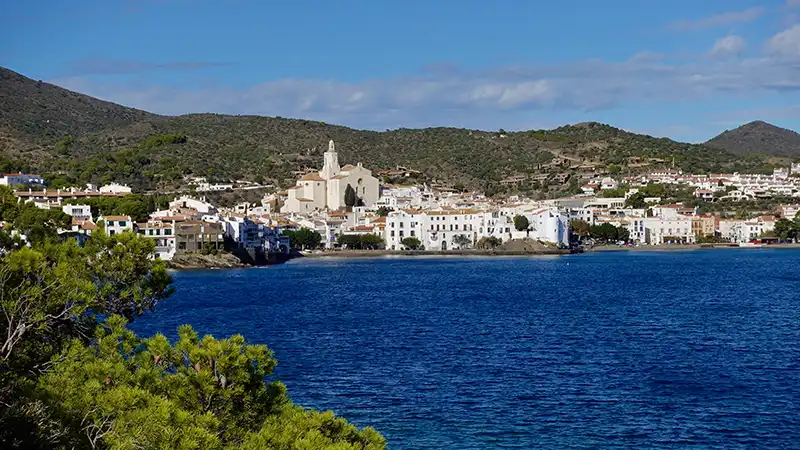
Okay, let’s teleport to another of Europe’s secret corners, shall we? Welcome to Cadaqués, Spain, a town so picturesque, it’ll make your Instagram filters jealous.
Tucked away in a cozy corner of Spain, Cadaqués is the kind of place that makes you wonder if you’ve accidentally stumbled into a painting.
Now, you might have heard of a guy named Salvador Dalí. Yep, the mustache-twirling surrealist. Cadaqués was his summer haunt, and let me tell you, the man had taste.
His house in Portlligat, now a museum, is as quirky and eccentric as his art. And Dalí wasn’t the only one smitten with Cadaqués – Picasso and Magritte were fans too.
This town is like a magnet for creative geniuses. Maybe it’s something in the air, or maybe it’s the town’s dreamy light quality that could make even a smartphone photo look like fine art.
Stroll through the whitewashed streets with their splashes of blue, and you’ll feel like you’re in a Mediterranean postcard.
And the beaches! Oh, the beaches – secluded little coves where you can sunbathe without someone kicking sand in your face. It’s a slice of paradise for those seeking a tranquil escape from the crowded tourist spots.
But Cadaqués isn’t just a pretty face; it’s got a soul too. The town’s festivals, like the Festa de Sant Baldiri, are a whirlwind of unique dances and rituals.
And the food – get ready to treat your taste buds to some Catalan cuisine with a twist. Imagine seafood so fresh, it practically winks at you, paired with locally grown olives and grapes. Yum!
Why is Cadaqués special, you ask? It’s a timeless escape, a world apart from the modern hustle. Its isolation has preserved its unique character, making it a treasure among lesser-known tourist spots in Europe.
It’s not just a town; it’s a haven for those seeking artistic inspiration, imbued with a bohemian spirit that lingers in its air. In a world racing towards the future, Cadaqués is a beautiful reminder of the charm of standing still.
Cesky Krumlov, Czech Republic
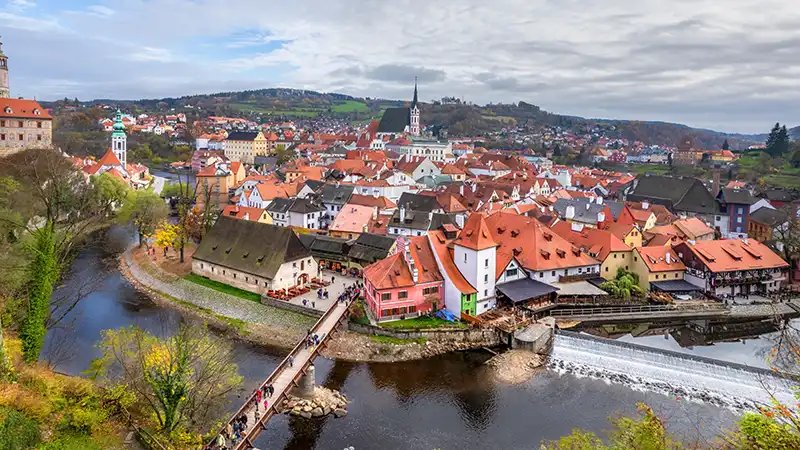
Next stop on our whistle-stop tour of lesser-known tourist spots in Europe: Cesky Krumlov, Czech Republic.
Trust me, this place is like stepping into a time machine and landing in a medieval fairytale – minus the uncomfortable corsets and, you know, dragons.
First up, let’s talk about the architectural eye candy here. Beyond the castle, which is epic in its own right, the town is a jigsaw puzzle of Gothic, Renaissance, and Baroque buildings.
And it’s not just for looking! This place is alive. Like, literally alive with history. The streets here are so winding and enchanting, you might just lose your way and find yourself in the 16th century.
Oh, and the Baroque Theatre at the castle? It’s like the backstage pass to the 1700s, complete with original stage machinery and costumes. No biggie, just one of the most preserved Baroque theatres in the world!
Now, if you’re an art and culture vulture, Cesky Krumlov’s got your back. The Egon Schiele Art Centrum pays homage to the town’s one-time resident and famous Austrian painter, Egon Schiele.
It’s a must-see for art lovers and anyone who appreciates a good splash of color. And let’s not forget the unique festivals.
Ever wanted to see a real-life Renaissance fair? The Five-Petalled Rose Festival has got jousting, costumes, and crafts that’ll make you feel like you’ve just crashed a medieval party.
But wait, there’s more! For the adventure seekers, the Vltava River offers canoeing and rafting experiences that are the definition of “going with the flow.”
And the hiking and biking trails? They’re your ticket to exploring the serene Bohemian countryside, where you can discover quaint villages and Instagram-worthy viewpoints.
After all that adventuring, you’ll probably be hungry, right? Cesky Krumlov’s traditional Czech cuisine and local breweries will take your taste buds on an adventure of their own. Pro tip: try the Svickova at a local eatery, not where the tourist maps tell you to go.
So why is Cesky Krumlov a hidden gem among lesser-known tourist spots in Europe? Simple. While everyone’s busy crowding Prague, this little medieval wonder is just waiting to be explored.
Outside the peak tourist seasons, this town is like a peaceful, mystical realm that’s just begging for a more personal experience.
It’s not just a trip; it’s an authentic historical experience, a chance to live in a living museum of medieval architecture and culture.
Kutná Hora, Czech Republic
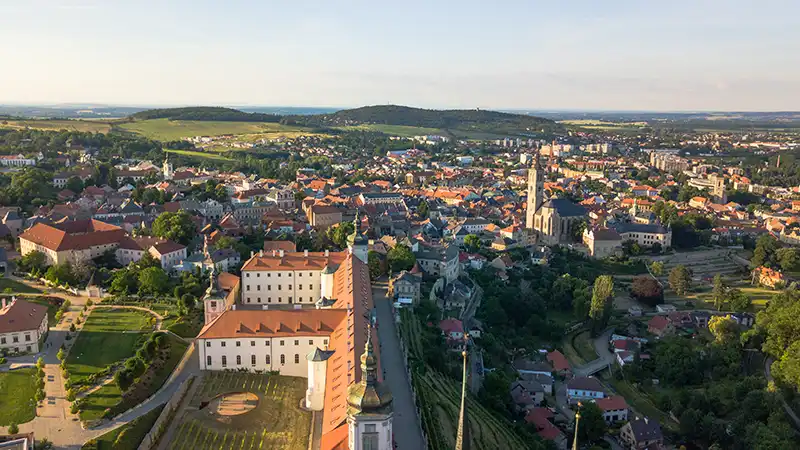
Welcome to Kutná Hora, Czech Republic, a place where history isn’t just in the textbooks, it’s under your feet, around the corner, and even hanging from the ceiling!
This isn’t your typical European pitstop; it’s a historical playground for the curious and adventurous.
Originally a silver mining town from the 13th century, Kutná Hora was the wallet of the Bohemian Kingdom. Talk about a rich history, literally!
Now, let’s talk architecture. Ever been to a palace that used to be a royal mint? Enter the Italian Court. This place isn’t just old; it’s a spectacular mash-up of Gothic and Renaissance styles.
It’s like walking through a portal to a time when royal bling was actual silver. And don’t even get me started on the Gothic Stone Fountain – it’s like a medieval version of MTV Cribs, symbolizing Kutná Hora’s once-booming prosperity.
But here’s where it gets really interesting. Ever seen a chandelier made of human bones? Welcome to the Sedlec Ossuary, or as I like to call it, the Bone Church.
It’s a little eerie, a little awe-inspiring, and totally surreal. Think of it as a macabre masterpiece that makes Kutná Hora a standout in the list of lesser-known tourist spots in Europe.
And for the Renaissance buffs, Barberini’s Court is your hidden gem, oozing stories of the famous Tuscan Barberini family.
Let’s not forget the GASK – a contemporary art haven in a former Jesuit college. It’s where ancient walls meet modern art, a blend that would make even the trendiest hipsters nod in approval.
And for a deep dive (quite literally) into the town’s mining past, the Czech Museum of Silver and Medieval Silver Mine offer an artistic journey underground.
In a nutshell, Kutná Hora is not just a stop on your European adventure; it’s a chapter in a storybook of lesser-known tourist spots in Europe.
It’s where history gets real and architecture tells tales. So, why visit Kutná Hora? Because it’s where the past isn’t just remembered; it’s experienced in the most extraordinary ways!
Sighișoara, Romania
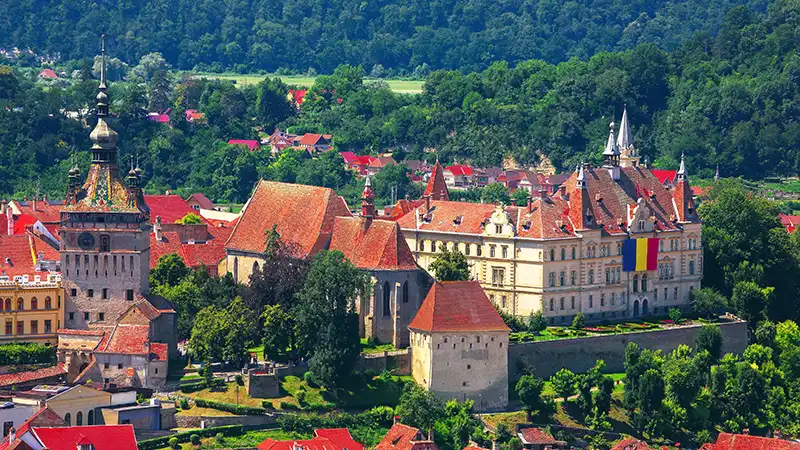
Hold on to your hats, because we’re about to whirl into Sighișoara, Romania – a town so enchantingly medieval, you’d half expect to see knights and damsels strolling around.
Nestled in the heart of Transylvania (yes, that Transylvania), this town is a kaleidoscope of pastel houses that look like they’ve been plucked straight from a whimsical storybook.
Walking through these vibrant streets is like being in a Disney movie, minus the singing animals.
But wait, it gets quirkier. Ever seen a covered, wooden staircase meant for a school? Sighișoara’s got one, and it’s as charming as it is mystifying. It’s like Hogwarts minus the moving portraits.
And speaking of intrigue, did you know this is the birthplace of Vlad the Impaler, the real-life Dracula? Yep, you can actually visit his old house, though I wouldn’t recommend waiting around for an autograph.
Then there’s the town’s medieval fortifications, each tower built by different guilds. It’s like a historical version of a neighborhood watch program, but with more style.
And let’s not forget the annual Medieval Festival! It’s a time machine back to jousts and crafts, where you can live out your knight-in-shining-armor or damsel-in-distress fantasies.
So why isn’t Sighișoara on every traveler’s bucket list? Well, it’s one of those lesser-known tourist spots in Europe, tucked away from the usual paths.
Romania doesn’t shout about its wonders like other countries, which means Sighișoara remains a hidden gem. But that’s exactly why you should visit!
It’s an untouched medieval world, a rare find in a world where most historic towns are overrun by tourists.
In Sighișoara, you’re not just visiting a place; you’re stepping into a living, breathing piece of history. It’s a must-visit for anyone seeking the charm of lesser-known tourist spots in Europe.
Mtskheta, Georgia
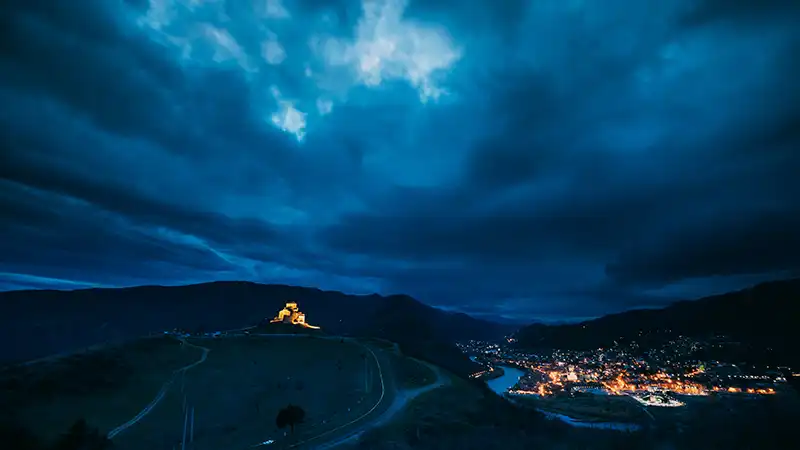
Pack your bags and set your compass to the east, my fellow globetrotters, because we’re heading to Mtskheta, Georgia – a place so steeped in history and spirituality, it’ll make you feel like you’ve stepped into a time machine (but, you know, without the DeLorean).
Mtskheta isn’t just any old town; it’s the cradle of Georgian Christianity. That’s right, back in the early 4th century, when most of us were still figuring out the wheel, Georgia was busy adopting Christianity, thanks to this very city.
It’s not just a spiritual heart; it’s like the spiritual pacemaker of the country! And if you’re a fan of ancient ruins, Mtskheta will feel like a birthday party.
This city was the cool kid on the block back when it was the capital of the Georgian Kingdom of Iberia – we’re talking about a history that goes back to 1000 BC!
Now, let’s talk architectural eye candy. Ever heard of Jvari Monastery? Imagine a stunning building perched on a hill, offering Instagram-worthy views of rivers playing tag below.
That’s Jvari for you, a masterpiece of medieval Georgian architecture. And then there’s the Svetitskhoveli Cathedral, where they say Christ’s mantle is buried. It’s not just a church; it’s a chapter from a medieval architecture textbook!
But Mtskheta isn’t just about old stones and holy mantles. It’s alive with traditions – we’re talking polyphonic singing that could give your favorite band a run for their money, and crafts that make your usual souvenirs look like dollar store trinkets.
And the food! Oh, the food! If you haven’t tried Khinkali or Churchkhela, you haven’t lived, my friend. This is the kind of culinary adventure your taste buds write home about.
So why is Mtskheta one of those lesser-known tourist spots in Europe? Well, it’s like that cool indie band that’s yet to be discovered because it’s overshadowed by the big city lights of Tbilisi.
Plus, when it comes to tourism, Georgia’s like that shy kid at the party, not bragging enough about its hidden gems like Mtskheta.
But here’s why you should add Mtskheta to your travel bucket list: this city isn’t just a place; it’s a vibe. It’s where spirituality meets history, where ancient architecture gives you a high-five, and where culinary delights await.
Mtskheta isn’t just a lesser-known tourist spot in Europe; it’s a journey for the soul.
Embracing the Journey: Discovering Europe’s Hidden Wonders
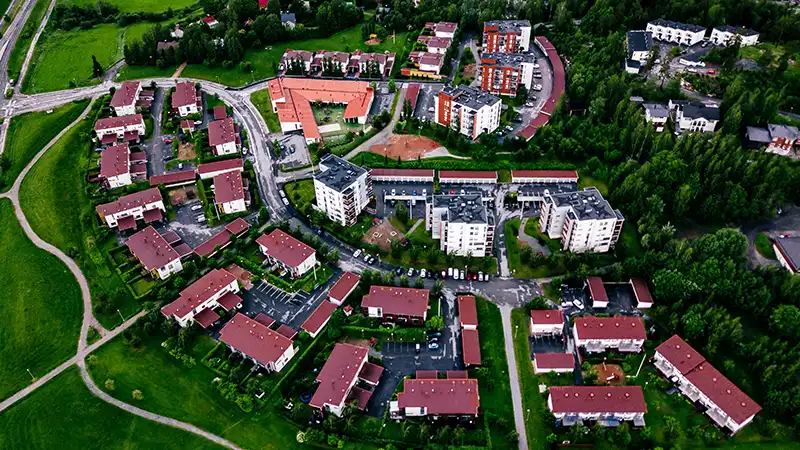
And there you have it – a whirlwind tour of some of the most enchanting, lesser-known tourist spots in Europe.
Each destination we’ve visited is a unique tapestry of history, culture, and breathtaking beauty, a delightful departure from the usual tourist traps.
These hidden gems offer not just a glimpse into the past or a snapshot for your social feeds, but a chance to immerse yourself in experiences that resonate deeply and personally.
As we wrap up our journey, remember this: travel isn’t just about ticking boxes or snapping photos. It’s about the stories we gather, the memories we create, and the joy of discovering the undiscovered.
So, the next time you’re plotting your European escapade, think beyond the well-worn paths. Venture into the charming streets of Berat, the mystical corners of Mtskheta, and the hidden alleys of Cesky Krumlov.
Embrace the spirit of adventure and let these lesser-known tourist spots in Europe surprise and enchant you.
Happy travels, and may your journey be as unique and unforgettable as the destinations we’ve explored together. Until our next adventure, keep wandering, keep wondering, and remember – the best stories are found off the beaten path. 🌟🌍✈️

